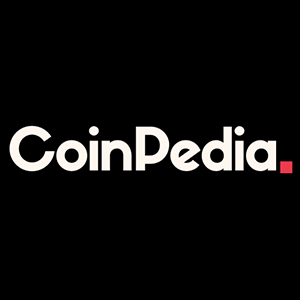Summary The spot Ethereum ETFs is seeing noteworthy institutional demand from the get-go, according to the ETFs S-1 filings. The spot Ethereum ETF is expected to create buying pressure on Ethereum, potentially leading to an altcoin rally and changing market cap dominance dynamics. Despite risks of volatility and initial outflows, the spot Ethereum ETF is a strong catalyst for Ethereum's price growth and institutional investment. It's been a great year for crypto so far. Bitcoin ( BTC-USD ) has seen a 59% gain YTD and Ethereum ( ETH-USD ) has recorded a 52% gain. The floodgates of crypto investing are now open to institutional investors. The year 2024 can well be called the year of crypto spot ETFs. Spot Bitcoin ETFs were approved in January and inflow records were broken sooner than anticipated. Then, what began as rumors of a potential spot Ethereum ETF is now a reality. What we’ve seen with the Bitcoin ETFs so far has been increased demand. The demand for the ETFs has put buying pressure on Bitcoin. The spot BTC ETFs average $100 million inflows daily while produced BTC (after the halving) is around 450 BTC daily (around $30 million at BTC's current $66,000 market price). Demand for BTC is constantly outpacing supply due to the spot Bitcoin ETFs. Altcoins started gaining popularity when programmability on the blockchain layer became a thing around 2014. Since altcoins gained popularity, Ethereum has led the altcoin bull market back to back. Other altcoins have moved up and down the market cap rank ladder over the years, but Ethereum has consistently maintained the number two market cap position, behind Bitcoin, over the years. The foremost altcoin is strongly positioned to lead the imminent altcoin rally this time also, with the spot Ether ETF catalyzing demand in the mid to long term. The Spot Ethereum ETF as a Major Catalyst What we can deduce from the spot Bitcoin ETFs since their launch is that they have been well received by institutional investors. Currently, the top 80 holders of these spot BTC ETFs are institutional investors. The buying pressure created by the spot Bitcoin ETFs makes Bitcoin rebound quicker from dips these days. For example, the Bitcoin sell-off by the German government earlier this month, which caused Bitcoin and the total crypto market to see a price decline across the board, was subsequently followed by weeks of inflows into the Bitcoin ETFs (a three-week inflow run totaling $3.2 billion ), thus making Bitcoin and the crypto market rebound swiftly. The spot Ethereum ETF is bound to create a similar buying pressure on Ethereum (though I anticipate it to be on a much smaller scale compared to the BTC inflows) and the resultant effects of such demand on ETH price will be seen in due course. Bitcoin is inarguably a household name in the crypto space, and some analysts might speculate that other crypto-related spot ETFs will be overshadowed by Bitcoin’s dominance. However, I strongly see a situation where institutional investors that are already heavily invested in the spot Bitcoin ETFs diversify their crypto-related portfolio by equally investing in the spot Ethereum ETFs. A stronger case for this, in my view, is supported by the fact that the spot Bitcoin ETFs have performed well since launch. This serves as a precursor, potentially boosting the sentiment among institutional investors to invest in a fresh crypto spot ETF. And rightly so, institutional investors are already showing interest in the spot Ethereum ETFs with noteworthy seed investment disclosures in the S-1 filings of the ETFs. Bitwise disclosed Pantera Capital’s interest in purchasing $100 million of its spot Ether ETF. I expect institutions to diversify into the Ether ETFs as a complementary asset, similar to how institutional investors holding gold ETFs often invest in silver ETFs as part of their diversification strategy. Bitcoin’s early stories resonate well among retail investors in and out of crypto. The 10,000 BTC pizza story , behind the Bitcoin pizza day, when an early Bitcoin user paid for two large Papa John’s ( PZZA ) pizzas with 10,000 BTC in May 2010, worth around $41 at the time; that pizza payment is worth around $670 million today - a whopping 1,634,146,000% change. This shows just how Bitcoin has been the best-performing asset over the past decade and a half. Looking back at such a percentage gain in just a little over a decade, most investors feel they missed out on a major wealth-creation opportunity. “What's the next Bitcoin?” is a common question among investors seeking alpha in crypto. Many crypto investors seek alpha through crypto altcoins. The main deterring factor for most investors in investing in altcoins is the much higher risk they pose compared to BTC. This deterrent has been amplified by the SEC’s past crackdown on altcoins, and the conflicting information about their classification as securities or non-securities. The SEC’s U-turn on Ethereum, ending its investigation into Ethereum 2.0 in June, followed by the approval and subsequent trading of spot Ethereum ETFs has given Ethereum a broader legitimacy among altcoins. Traditional investors seeking alpha in crypto will naturally turn their attention to Ethereum, in the meantime. BTC.D (TradingView) The spot Ethereum ETF will also likely change the dynamics of market cap dominance between Bitcoin and altcoins. Bitcoin dominance (BTC.D) has been strongly above 50% since the spots Bitcoin ETFs went live in January, hitting a two-year high of 57% in mid-April. I believe that the spot Ether ETFs will shrink BTC.D as Ethereum also sees demand, with the likelihood of ETH’s demand spreading to other altcoins - particularly Layer-1 altcoins. The spot Ethereum ETFs going live means that the crypto market will engage more in speculative altcoin trades as investors seek to identify which altcoin will see a spot ETF approval next. This will spark a balance between Bitcoin and altcoin dominance and create an altcoin rally. The scenario of speculative trading in search of the next spot ETF candidate I described above is already underway. For instance, following the approval of the spot Ether ETF 19b-4 forms on May 27, speculation has built up around a potential spot Ripple ( XRP-USD ) ETF. XRP price has surged by about 40% in the past two weeks, now trading above $0.6 on the speculation that the SEC will put its legal brawl with Ripple to bed and a spot XRP ETF filing could be on the horizon. I, however, personally believe that it is likely a wrap for crypto spot ETF approval in the U.S. for this market cycle (or at least for this year) because the regulatory status of most major altcoins remains ambiguous at the moment. This is a stronger reason why I believe Ethereum is positioned to lead the next altcoin, being the only altcoin likely to witness a spot ETF demand. Risks Deribit Crypto investments remain highly volatile. The spot Bitcoin ETF hasn't eliminated Bitcoin’s volatility, as seen in the recent sudden drop following the German government BTC sell-off. In the same vein, the spot Ethereum ETF will likely not subdue ETH’s inherent volatility. Ethereum options implied volatility (“IV”) has trended higher as the spot ETFs launch inch closer. Market expectations for near-term volatility have increased. The asset still possesses an extra propensity to deviate from IV forecasts and exhibit a more steep price surge or drop. This steeper decline shouldn't be ruled in the near term as the Mt. Gox ~$9 billion crypto payments fully roll out. TheBlock ETH could see some price decline in the first few trading days as the spot ETFs go live. Grayscale retaining the current high fee of its converted closed-end fund, the Grayscale Ethereum Trust ( ETHE ), in its spot Ethereum ETF could spell initial outflow. On the spot Ethereum ETF conversion, investors who had previously bought ETHE when it traded around -24% discount to NAV in April, will likely redeem their shares now that it trades around par. The Grayscale fund is currently the world’s largest Ethereum fund and holds around 2,629,468 ETH, worth around $9.6 billion, in AuM. This could be an overhang. Conclusion Bloomberg What we have witnessed with the spot Bitcoin ETFs launch, shows that the spot ETFs are an investment vehicle that drives up organic demand for a crypto asset. Bitcoin’s price has correlated with the ETF inflow. Ethereum’s spot ETF is coming at the right time when Bitcoin’s post-halving supply reduction and spot ETF inflows have sparked momentum in the crypto market. Ethereum total value staked (CryptoQuant) The Bitcoin halving reduced new Bitcoin supply, then the spot ETFs increased demand - a combo that has created a supply-demand imbalance. Ethereum doesn't undergo a quadrennial halving event and its supply isn't capped like that of Bitcoin. However, Ethereum has evolved and now includes some interesting supply reduction mechanisms that include a gas fee burning structure and validator rewards reduction known by the moniker “ triple halving .” Since transitioning to proof-of-stake consensus the issuance of ETH has decreased by about 90%. The Ethereum network is now validated by staking, since the transition to proof of stake. In staking , users lock up ETH to validate transactions on the Ethereum network and in turn receive incentives in the form of ETH rewards. Staking locks up supply, thereby reducing the inflation of Ethereum. The total value staked currently on the ETH network sits at 33.1 million ETH, which is around 28% of ETH’s current total supply. Staking on Ethereum gained immense traction with the introduction of liquid staking . With the ETF approval, staking becomes a two-edged sword. On the one hand, staking reduces supply thereby putting buying pressure on ETH price as demand for the ETF pent up. On the other hand, investors knowledgeable about staking might opt for staking directly with a liquid staking provider, like Lido, to gain from staking incentives. The funds are not allowed to stake the ETH in their portfolio; hence, no staking rewards for investors gaining exposure via the spot Ethereum ETFs. While this might seem to pose a drawback on the surface, I still believe that the lack of staking capabilities in the funds will have an inconsequential influence on demand for the ETFs. The ETFs are geared towards institutional investors and retail investors who generally care less about the intricacies of blockchain technology. BTC vs ETH ETP products demand (Galaxy) Data compiled by Galaxy shows the existing institutional demand for existing Bitcoin ETPs (excluding spot ETFs) in the U.S. to be about 3.24x of ETH's ETP demand. In other words, ETH sees about 31% of Bitcoin’s demand. Plugging this ETP demand data into the ~$17 billion inflows the spot Bitcoin ETFs have recorded so far in about six months, suggests that the spot Ethereum ETFs could potentially see around $10.5 billion of net inflows per year, or $900 million per month. I arrived at this estimate by first annualizing the ~17 billion six-month net inflows of the spot Bitcoin ETF, which is around $34 billion yearly. Considering Ethereum’s ETP demand is around 31% of Bitcoin’s, that gives a rough estimate of $10.5 billion - if the institutional demand for ETPs mirrors the demand for spot Ether ETF. Ethereum’s spot ETFs coming in a bull market, amidst growing institutional interest in crypto-related investments is an undeniable catalyst for ETH. I have been bullish on ETH since the start of the year. In my last Ethereum coverage in February, which I titled “ Ethereum: Catalysts In Plain Sight ,” I anticipated a spot ETF approval as a potential major catalyst for ETH. We are up by 53% since that coverage. At that time, the catalysts were in “plain sight”; today, the catalysts are more apparent. I remain highly bullish on ETH.














